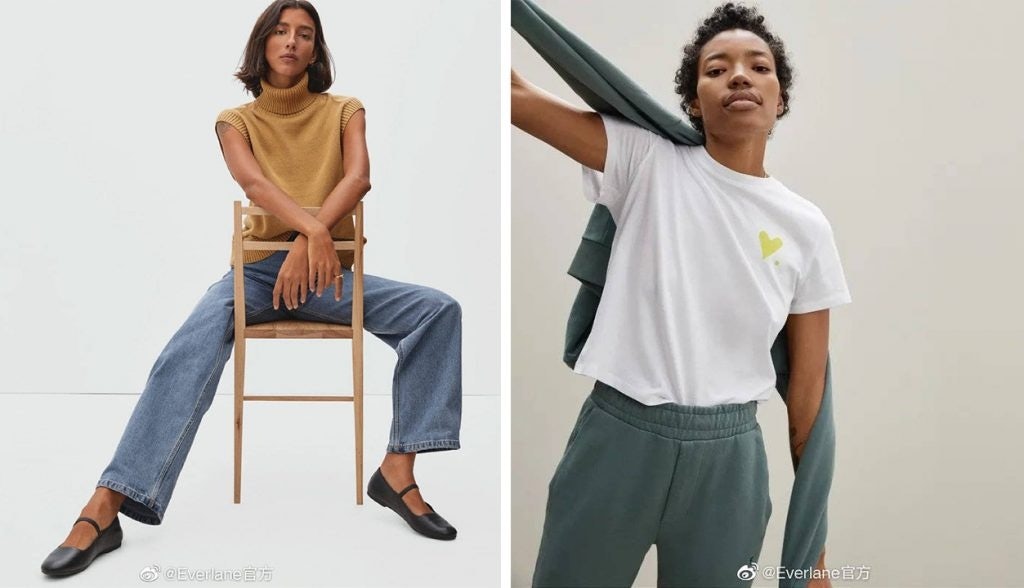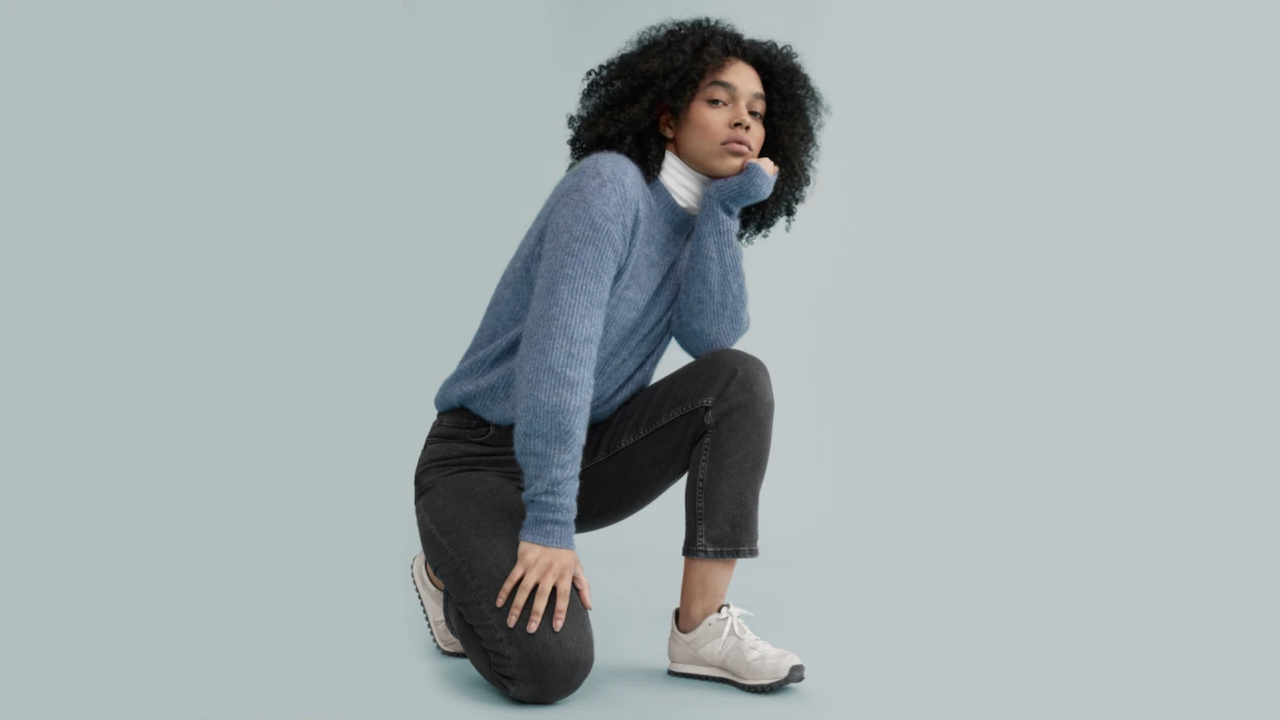Key Takeaways:#
Everlane and Urban Outfitters are the latest brands to withdraw from China, joining a growing list of fashion casualties that includes Asos, Topshop, and Old Navy.
Although Everlane is best known for its sustainability messaging, this is not appealing enough to Chinese consumers on its own. Green marketing needs to be paired with quality products, good customer service, and an understanding of the local culture.
- If Everlane wants to return to China, it will need a committed China domestic presence and greater brand visibility, expanding beyond its 530,000 followers on Tmall.
Just two years after entering China, Everlane is taking a step back. Last month, the San Francisco-based DTC company announced that it would stop selling on Tmall Global on September 12 and end customer service operations by October 10.
Although Everlane is not giving up on the lucrative mainland market — explaining in a Weibo post that Chinese consumers can still shop on its global website — the move marks a worrying trend of retreats by global retailers. On the same day as Everlane, Urban Outfitters also removed products from its Tmall store, shutting down its only official sales channel in China. The two join a growing list of casualties that includes Asos, Topshop, Old Navy, and New Look, among others.
For international brands, the challenges boil down to more than the pandemic. While the luxury segment has remained resilient in China, mass market players have had a tougher time given the rise of domestic competitors and online sellers on platforms like Taobao. With their ability to produce cheaply, quickly, and with acceptable quality, it has become hard for even the world’s big fast fashion players to keep pace.
Once regarded as America’s Uniqlo, Everlane looked like it had a promising future in China. The brand’s emphasis on sustainable practices and “radical transparency” in its supply chain set it apart from others and even attracted an 85 million investment by LVMH-linked L Catterton last year. So, where did the brand stumble and how can other apparel makers avoid its fate?
Everlane’s entry into China#
During its brief stint in China, Everlane was not idle. In August 2019, the casual fashion brand opened WeChat, Weibo, and Tmall flagship store accounts where it promoted its full range of men’s and women's clothing as well as its new environmental footwear series at the time, Tread. On these channels, Everlane introduced local audiences to its concept of “radical transparency” and broke down the hidden costs (such as raw materials, labor, tariffs, and shipping) behind its price tags.
Lacking a physical retail footprint, Everlane found creative ways to play up its sustainability messaging offline and appeal to the country’s impact-conscious consumers. For example, to mark its first anniversary in the market, the mission-driven label partnered with Alibaba’s delivery service Ele.me and Shanghai boutique roaster Seesaw Coffee to produce a gift box made from 100 percent recycled materials, which contained a limited-edition T-shirt, organic coffee, and plant seeds. Meanwhile, on this year’s Earth Day, Everlane opened its first limited-time concept store called “Reject Plastic Love” in Shanghai to highlight the amount of discarded plastics products used in daily life.

Challenges in China’s apparel market#
However, these green tactics arguably cannot stand on their own. While Chinese consumers do care about the environment, the concept of sustainable clothing reached China after the west and is less mainstream, Allison Malmsten, a marketing director at Daxue Consulting, told Jing Daily. As such, “[sustainability marketing] also needs to be paired with quality [products], good customer service, and for the brand to show an understanding of local culture.”
And these are all areas where Everlane has struggled. While the brand chooses to produce high-quality wardrobe staples rather than adhere to seasonal trends, standing out from the crowd has been one of its biggest obstacles. “Whilst a small few are compelled by ‘lasting style,’ many still want trendy and ‘hot’ items,” said Adam Sandzer, Head of Commercial Strategy at Hot Pot China. From cashmere crews to simple white cotton tees, Everlane’s minimalist aesthetic not only lacks differentiation but also puts it at risk of being copied by Chinese competitors.

On top of this, Everlane’s biggest pull factor — its promise of ethical and sustainable fashion — has not been tailored to a Chinese context. According to Adam Knight, co-founder of cross-cultural consultancy TONG, Chinese consumers tend to care about different environment-related issues depending on their immediate geography and lived experience. “Depending on your location, this translates into a greater preference for brands that tackle water, air or soil pollution at the local level, rather than a focus on more abstract global issues.”
More concerningly, for a DTC brand, Everlane seems to lack a strong connection to consumers. Although its Weibo presence reportedly saw triple-digit growth from March to June 2020, its customer service “simply did not keep up with Chinese netizen expectations,” Malmsten noted. Plus, a lack of KOLs and KOCs — key drivers in a market that “revolutionized and then supercharged the concept of influencer marketing,” as Knight put it — has hampered the growth of its social media and e-commerce channels.
How brands recalibrate and resurrect#
Despite these setbacks, the call of China’s 200 billion apparel market is hard to deny. That’s why Everlane has stressed that it will continue serving Chinese consumers even without a local presence. Everlane’s International General manager said as much in an interview with Jing Daily last year: “When it comes to China, we are only beginning our work here and plan to be in the country in the long run.”
But if the American label wants to return stronger than ever, it will need to go all-in. “[Everlane] needs to leverage profits from the US and other markets to invest in a committed China domestic presence versus cross-border,” Sandzer explained. Additionally, Everlane will require greater brand visibility, he continued, pointing out that it currently has less than 1,000 views per post on WeChat and half a million followers on its Tmall flagship store (far behind Uniqlo’s 24 million followers).
As Forever 21, which recently announced its third foray into China, stated, the road to return is full of thorns. However, by focusing on localization and cultivating Chinese consumer awareness around sustainability, perhaps Everlane can blossom and eventually become America’s Uniqlo its next time around — or, at the very least, stay in the green.


